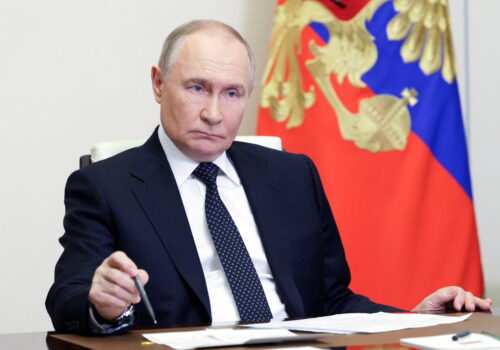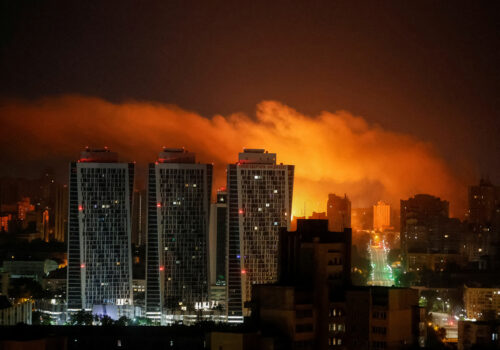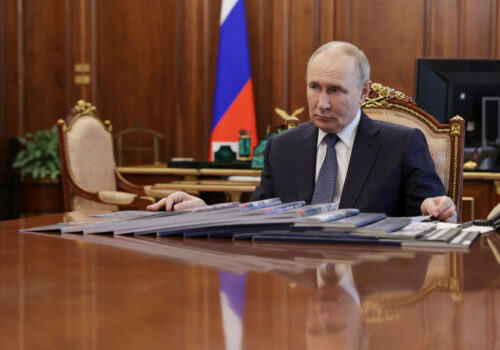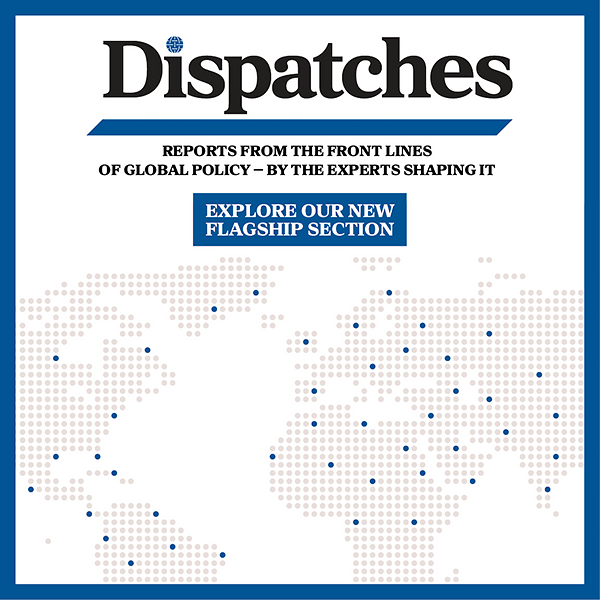Trump and Putin just announced a meeting in Alaska. What does that mean for the war in Ukraine?
JUST IN
The face-off is set. US President Donald Trump announced Friday that he would meet with Russian President Vladimir Putin on August 15 in Alaska. It’s the first meeting between US and Russian heads of state since before Russian forces launched their full-scale invasion of Ukraine in February 2022. Also on Friday, the Wall Street Journal reported that Russia has floated a cease-fire proposal that would allow for significant territorial concessions in eastern Ukraine to Russia, as well as US assistance toward international recognition of those areas as Russian. As attention turns to the tête-à-tête in the last frontier, we turn to our experts for their insights on what to expect.
TODAY’S EXPERT REACTION BROUGHT TO YOU BY
- John E. Herbst (@JohnEdHerbst): Senior director of the Council’s Eurasia Center and former US ambassador to Ukraine
- Oleh Shamshur (@Shamshur_O): Nonresident senior fellow at the Eurasia Center and former Ukrainian ambassador to the United States
- Tressa Guenov: Director for programs and operations and senior fellow at the Scowcroft Center for Strategy and Security, and former US principal deputy assistant secretary of defense for international security affairs
Getting to Alaska
- “Over the past two months, Trump set the stage by steadily increasing pressure on the Kremlin,” John tells us. This included persuading NATO members to increase defense spending (and count military aid to Ukraine is part of the total), threatening new sanctions on Russia, and raising tariffs on India for buying Russian oil.
- At the same time, Trump has held back on stronger sanctions despite imposing a deadline of Friday, and there are also questions about how Trump views this meeting. “In spite of his recent criticism of Putin, Trump seems to still be clinging to the idea that he can talk with Putin as a partner rather than as an adversary,” says Oleh.
- For his part, Putin seems to be going into this meeting “confident domestically,” Tressa says, “and sees his international isolation since the Ukraine war as a moat against US and European actions.”
Sign up to receive rapid insight in your inbox from Atlantic Council experts on global events as they unfold.
Absent in Alaska
- A main feature of the reported cease-fire plan proposed by Russia is the ceding of large swathes of Ukrainian territory in the Donbas to Russia. Such a plan would “be a major victory for Russia and an awful blow for Ukraine,” Oleh tells us from on the ground in Ukraine.
- Making the situation worse is that Ukrainian President Volodymyr Zelenskyy won’t be in the room. “Issues crucial to Ukraine are being decided without its direct participation, exactly as it was devised by Putin,” Oleh points out.
- Neither have European allies been invited. “That has the smell of the Yalta Conference in 1945,” says John, “where the United States, the Soviet Union, and the United Kingdom decided the fate of half of Europe over the heads of those nations.”
- Putin’s rationale for the exclusions is clear, John explains: “He wants a deal with Trump that will be presented to Kyiv and other European capitals as a fait accompli.” However, John adds, that could make a truly durable peace harder to achieve.
On the menu
- In the reported cease-fire proposal, John notes, “territorial concessions to Moscow are frontloaded, but the critical things that Moscow must accept will be handled in subsequent peace negotiations.”
- Other aspects are, for instance, the Russian response to the ongoing arming of Ukraine by the United States and other NATO allies, as well as the potential stationing of European peacekeepers in Ukraine. Those elements are critical, Tressa says, as the success of any deal relies on a “credible and sustained commitment to deterring Russian aggression in Europe and around the world.”
- For his part, Zelenskyy has pushed back indirectly about any possible fait accompli by noting that the Ukrainian Constitution requires a referendum to make any territorial changes, explains John.
After Alaska
- Immediately after the Alaska summit, John recommends Trump reinforce his hand by adding Ukraine and European countries to the talks, announcing a big weapons sale, and threatening more secondary sanctions if Putin continues bombing.
- In the coming three to five years, Tressa says, Russia will be trying to “recapitalize itself militarily.” Thus, it will be closely watching whether European countries keep their stepped-up defense spending commitments and “whether European and US industry can produce enough equipment” to defend Ukraine and NATO.
- The Kremlin will also keep watch on whether the United States pulls troops away from Europe. “A large transfer of US forces from Europe to the Indo-Pacific now would create more space for adventurism by Putin in Europe and around the world,” Tressa adds.
- Oleh emphasizes that “concessions to Putin would be a prelude to new Russian aggression, which will be not limited to Ukraine and may target Article 5 territory.” Western leaders, he adds, should acknowledge that “the war in Europe has already begun.”
- Finally, John cautions not to confuse a temporary deal for a lasting peace. Putin’s “goal remains to achieve effective political control of Ukraine.” That means the cease-fire terms “reflect what Putin is willing to accept and do now. It says nothing about what he will do in the future.”
Further reading
Tue, Jul 29, 2025
Trump offered Putin victory in Ukraine. Why did Putin refuse?
UkraineAlert By Peter Dickinson
Trump thought he could get a peace deal in Ukraine by offering Putin generous terms that amounted to a Russian victory. But Putin rejected Trump's offer because he cannot accept anything less that Ukraine's complete capitulation, writes Peter Dickinson.
Mon, Jul 28, 2025
Europe is ‘not ready’ for the Russian threat. At least it now has a plan.
Inflection Points By Frederick Kempe
The European Union is waking up to the threat posed by Russian President Vladimir Putin and his battle-hardened army. Will it be enough?
Tue, Jul 29, 2025
The Russia pressure menu: Options to convince Putin to negotiate on Ukraine
New Atlanticist By John E. Herbst
As the US president cuts his deadline for Russia to ten days, there are several options for him to increase pressure on Moscow to pursue peace.
Image: FILE PHOTO: U.S. President Donald Trump and Russia's President Vladimir Putin talk during the family photo session at the APEC Summit in Danang, Vietnam November 11, 2017. REUTERS/Jorge Silva/File Photo



